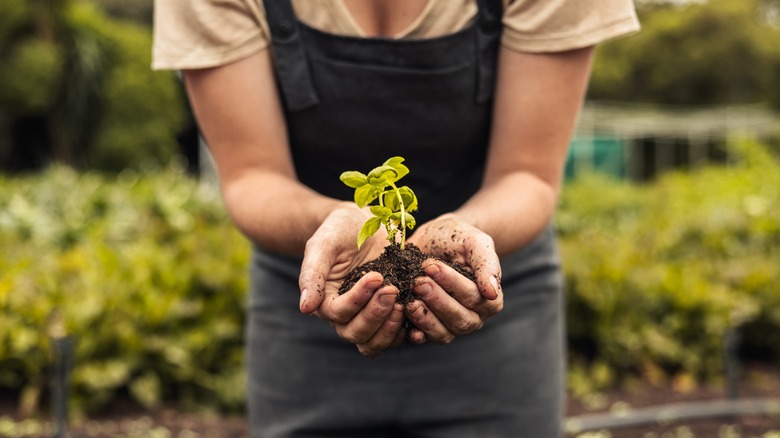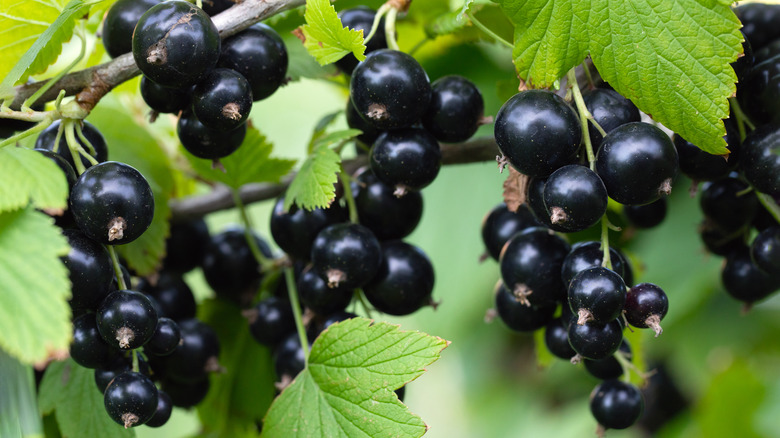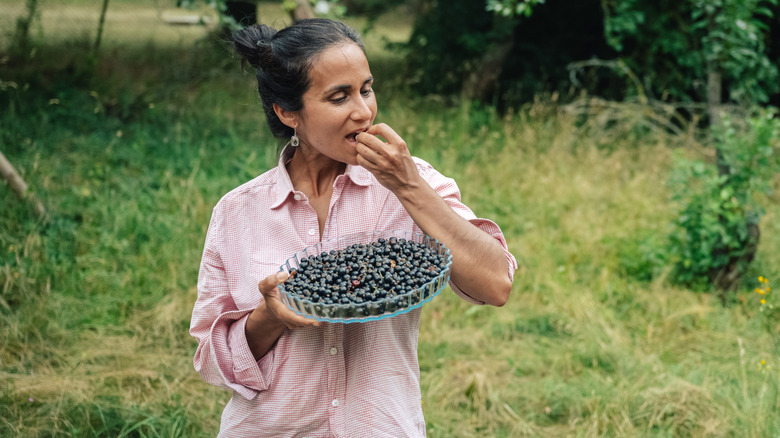The Stunning Fruit Shrub That's Making A Comeback After Being Banned For Decades
With the way society harps on the importance of eating fruits, it's hard to believe that some of them could ever be outlawed. If you've never had a blackcurrant drink or tasted the fruit before while living in the U.S., it wouldn't be surprising. Blackcurrants take the term "forbidden fruit" to a whole new level. From 1911 until 1966, growing this fruit was federally banned, and some states still have restrictions against growing the berry-producing bush in your yard.
The formerly illegal plant harbored a fungus called white pine blister rust, which decimated pine trees by the acre and posed a serious threat to the timber industry. The ban was eventually lifted after resistant pine trees were introduced and the immense health benefits of blackcurrants were revealed. Today, most states have lifted their own bans, and the stunning fruit bush is making the comeback it deserves.
You can grow blackcurrants right in your own yard from the seed. They're an easy shrub to plant and harvest once you have the know-how. Standing over 5 feet tall, blackcurrant is also a looker of a plant and a great place to start if you're looking for an exotic new addition to your garden.
Growing blackcurrant
The blackcurrant is indigenous to Europe and Asia and grows well in cool temperatures. These berries thrive in full sunlight but don't mind partial shade. You can grow currant plants in pots or in the ground, although planting them in ground soil is ideal. Just make sure the soil is well-fertilized, rich, and well-drained.
If you're thinking of growing blackcurrant from the seed, you'll have to go through a rigorous process of stratification, which, in this case, means cooling the seed to just above freezing temperatures. Because currants are native to cold weather, they need the cold to activate the seed for a period of three to four months. To save some time and hassle, you can buy a young plant from a nursery. Make sure you do research on the varieties available.
Once your plant arrives either bare-rooted or in a pot, dig a deep enough hole for the roots to be well-spaced out and make it 2 inches deeper than the soil it was in. Transplant the shrub and mulch around it with compost. You'll have to prune the bush immediately and water it regularly during the growing season when the soil gets dry. Place a mesh net around the bush when the berries start to change color and ripen to prevent birds from gobbling them up.
Harvest the currants
The impressive thing about blackcurrant plants is that the turnover is quick. If you plant in March, you would be harvesting in the summer, provided you purchased a two-year-old plant of a decent variety. Harvest the berries once they are dark, plump, and firm by using strong scissors to snap them up by the bunch. Take the bunches home and pick the berries by hand before storing them in the fridge. If you take care of it properly, your blackcurrant bush can last 10 years producing fruit.
Pruning your currant plant is necessary to remove old and dead stems and make room for new growth, but you must be careful what you remove. If you notice that your plant is producing little to no fruit during the harvest period, it could be because you mistakenly pruned out the new shoots.
Also, be sure to keep adding mulch and fertilizer when needed to add nutrients and moisture back to the soil. If your current leaves are becoming discolored and yellow, it's a sure sign of malnutrition, and you need to step it up. Growing blackcurrant is a rewarding experience you won't regret if you choose to undertake it.


